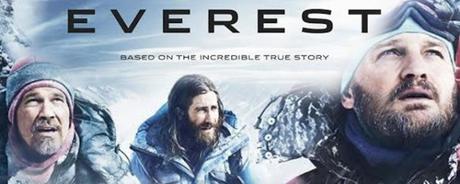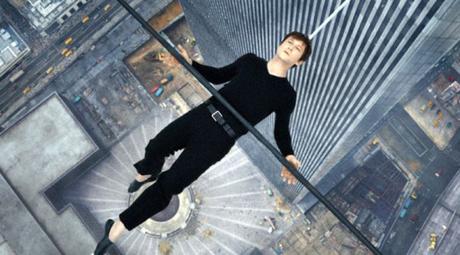Over the summer, for some reason most of the movies I saw came with the same three trailers: Everest, In the Heart of the Sea and The Finest Hours. Sometimes The Walk would be thrown in there, and once I got out of the summer I’d occasionally see the trailer for The 33. As such, I became very accustomed to seeing some variation of the phrase, “Based on the incredible true story of…” with the true story ranging from mountain climbers dying (Everest) to sailors fighting a big ass whale (In the Heart of the Sea) to coast guard workers braving a winter storm to stage an impossible rescue (The Finest Hours) to a French trapeze artist walking between The Twin Towers (The Walk) to Chilean miners improbably surviving an underground collapse (The 33). Each true life story is arguably a testament to the power of the human spirit (or talking all of your friends into helping you walk across two buildings because, fuck it, why not), and other than The 33 each trailer showcased at least one killer action sequence, practically screaming, “Imagine how cool this will look in 3D, or, better yet, IMAX!”
Because of all that, I will forever lump these movies together in my mind. However, there’s another reason to lump them together: They’ve all turned into box office disappointments, domestically. Well, not The Finest Hours, which doesn’t actually come out until late January 2016. However, its box office prospects don’t seem so hot, not after In the Heart of the Sea just continued this run of failure for 2015’s ripped-from-the-headlines event movies.
Based on Nathaniel Philbrick’s nonfiction book detailing the sinking of a whaling ship in 1820 which inspired Herman Melville Moby Dick, In the Heart of the Sea re-teams director Ron Howard with Chris Hemsworth. Unfortunately, the domestic opening ($11.1 million) more or less replicated the opening for the last film they did together, Rush ($10m).
The film’s distributor, Warner Bros., has been quick to point out that movies released in mid-to-late December should not always be judged based on opening weekends alone. Films released at this time of the year tend to have longer legs, and the studio’s distribution chief cited a relatively recent example, “Blood Diamond opened to $8.6 million in mid-December 2006 and did $57.4 million all in.” Of course, Blood Diamond actually cost $100 million to make, but, still, the point remains – these things can find an audience over the holidays. However, the industry trades (e.g, THR, Deadline) all seem ready to write this one off. The budget was too high ($100 million), and the domestic and international debuts too low. Ergo, this one is as dead in the water as the sailors in the movie after the whale attack. Come on, home video. Papa needs to break even somewhere.

However, as I discussed earlier this year when focusing specifically on Everest and The Walk, where was the narrative tension if we knew how the story would play out? And did the supposedly standout sequences really stand out enough?
As always, though, it’s not any one thing. Everest and The Walk were interesting cases because they opened within weeks of each other and utilized the same exact experimental release strategy. The 33, on the other hand, opened in early November opposite an ill-fated Christmas movie (Love the Coopers), sandwiched in-between the openings of Spectre and Hunger Games: Mockingjay-Part 2. It never had a real chance, not when you consider that the collective box office tends to tighten up the week prior to an insanely anticipated huge new movie, like, for example, the final Hunger Games. On that same token, In the Heart of the Sea had the misfortune of opening the week before the new Star Wars, which might partially explain why hardly anyone under the age of 18 went to see it. They’re all just saving up and waiting for The Force Awakens.

Why did we get all of these moves in the same year with The Finest Hours right around the corner? Pure coincidence? A reflection of Hollywood’s on-going attempts to event-ivize IMAX releases in a post-Gravity world? An extension of the increasing need for all movies to be based on some pre-exisitng material, be it a comic book, earlier film or a true life story? A calculated effort to make increasingly language-neutral movies which can play well worldwide, thus easily translatable stories, e.g., “People go up a mountain. Not all of them come back”/”Big whales are mean. Thor fights back.”/”Guy walks on a tight rope. You’ll cheer for him to fall.”/etc.?
If that last point is at least a little true, it certainly paid off for Everest. Although its domestic box office never matched up to its word-of-mouth and critical acclaim, Everest was an international hit meaning it ended up with a worldwide gross nearly six times its budget.
Your move, In the Heart of the Sea. Also, good luck, The Finest Hours. You might need it.


